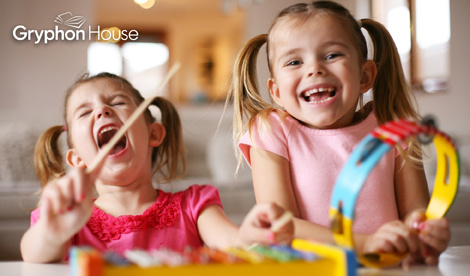Whether a child has high energy or ADHD, preschool movement activities can help! Incorporating creative movement activities into your classroom is the perfect way to let high energy kids exercise their bodies and minds, burning off excess energy and improving their attention to classroom activities, while developing crucial motor and social skills. Movement activities can also be combined with subjects such as literacy, math, and music - the possibilities are endless.
Whether a child has high energy or ADHD, preschool movement activities can help! Incorporating creative movement activities into your classroom is the perfect way to let high energy kids exercise their bodies and minds, burning off excess energy and improving their attention to classroom activities, while developing crucial motor and social skills. Movement activities can also be combined with subjects such as literacy, math, and music - the possibilities are endless.
Move to Learn, by Joye Newman and Miriam P. Feinberg, is a wonderful resource for teachers, and even parents, looking to channel high energy into constructive activities that will develop their preschoolers’ skills. Here are a few movement activities you can try with your high energy kids today!
Let’s Play Tape Touch
In addition to learning colors and following directions, children practice fine-motor skills as they place and remove the tape.
Preparation: You will need masking tape or painter’s tape in red, yellow, blue, and green.
What to do:
- Give each child a small piece of each of the tape colors.
- Ask them to stick each piece of tape to the floor, anywhere they like. Then, ask them to smooth them out and rub them down hard with their hands. No piece should be on top of another piece.
- Say, “Put one hand on the red tape and one foot on the blue tape.”
- Continue, asking them to put different body parts on the different colors:
- Their heads on green tape
- One elbow on blue tape and one knee on yellow tape
- A round part of their bodies on red tape and a pointy part on blue tape
Listen and Move
Heighten auditory skills, enhance appreciation of music, strengthen spatial awareness, and address self-regulation with this musical activity. Be sure to provide plenty of room to move.
Preparation: You will need two different types of music, such as a rhythmic march and a soft lullaby.
What to do:
- Select two types of music, and invite the children to move. Play a march and a lullaby for younger children, Use as many as four different types of music, depending on the developmental stages of the children.
- As you play the lullaby, ask, “Can you move all around the room as you listen to this lullaby? Can you move, showing the way the lullaby makes you feel?”
- As you play the march, ask, “Can you move around the room, showing the way marching music makes you feel?”
- Divide the class in half. If using three types of music, divide the class into three groups.
- Assign music to each group. To the march group, say, “This group will move the way marching music makes you feel.” To the lullaby group, say, “This group will move the way lullaby music makes you feel.”
- To both groups, say, “When you hear your special music, move all around the room. When your music stops, freeze until you hear your music again.”
- Play one type of music, such as the lullaby. Encourage the lullaby group to move wile reminding the march group to freeze.
- Stop the lullaby and play the march. Encourage the march group to move while reminding the lullaby group to freeze.
- Continue in this manner, challenging the children to listen for their music and to move when they hear it.
Moving with My Friend
Besides offering a fun way to address cooperation, this activity helps develop body awareness and proprioception.
Preparation: You will need one beanbag for each pair of children.
What to do:
- Ask the children to choose partners. Give each pair a beanbag.
- Ask a pair of children to hold their beanbag up without using their hands and to show how they can move together around the room without dropping the beanbag.
- As they move around the room, comment on their choices: “Daniel and Gabrielle, you are walking while holding the beanbag with your hips. You are really cooperating to hold the beanbag.”
- Encourage other pairs of children to hold the beanbag in different ways as they move around the room, such as the following:
With their elbows
With their heads
With their backs
With their hips
With their shoulders
Comment on their choices for how to hold the beanbags and on their ability to cooperate.

